“I think it’s following us.”
Walking slowly along the trail in Australia’s Lamington National Park, conservation geographer Tim Boucher and I were enjoying the rainforest birds when we realized that we, too, were being watched. Creeping stealthily through the undergrowth, an Australian Brushturkey was following our every move, hopeful that we’d oblige it with some snacks.
I’d had a fleeting glance of this bird an hour or so earlier as it skittered across the road, prompting Boucher to screech the car to a stop and vault out the driver’s side door, binoculars in tow.
But this was my first good look at this classic Aussie species — and boy was it ugly.
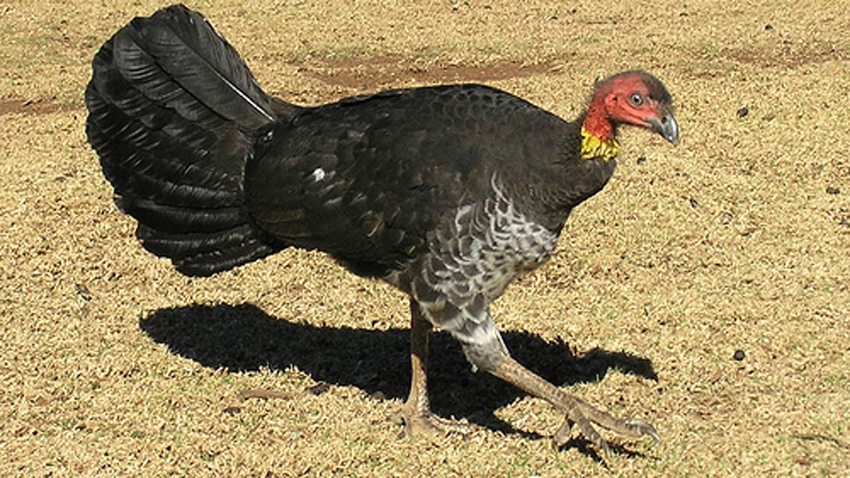
A Turkey in Name Only
The Australian Brushturkey is, in fact, not a turkey at all. (The unknown person who gave the species its common name can certainly be forgiven for the mistake.)
Also known as a scrub or bush turkey, brushturkeys are actually megapodes, a family of birds only in Australasia, Polynesia, New Guinea, and Indonesian Islands east of the Wallace Line. The family name literally means “big foot,” and one glance at the dinosaur-like feet of the brushturkey is all you need to rest assured that this name is quite accurate.
Utterly unmistakable even to the most novice of wildlife watchers, brushturkeys have glossy, brown-black plumage and a massive, broad tail that, unlike Northern American turkeys, is oriented vertically.
The species’ most distinctive feature is undoubtedly it’s brilliant red face and colorful wattle — the dangling, fleshy growth hanging from the bird’s throat. Wattle color varies with both sex and location: Males in the southern parts of the bird’s range have a bright yellow wattle, while males on the Cape York Peninsula have light blue wattles. Females in both areas have dull yellow wattles.
Donate Now to Protect Nature
Help protect threatened lands and waters around the globe.
An omnivorous species, brushturkeys forage for fruits, seeds, and small animals in the leaf litter of the humid rainforests and suburban backyards along Australia’s eastern coast. The brushturkey has one notable similarity (aside from its looks) with the American Wild Turkey: Its adaptability to humans. Despite being big and visible, it’s managed to thrive alongside humans, and is often spotted in botanical gardens, farms and small patches of habitat in urban environments.
Brushturkeys are joined by two other Australian megapodes: the Orange-footed Scrubfowl, found in northern Australia’s forests, Indonesia, and New Guinea, and the Malleefowl, found in the arid shrublands of southern Australia.
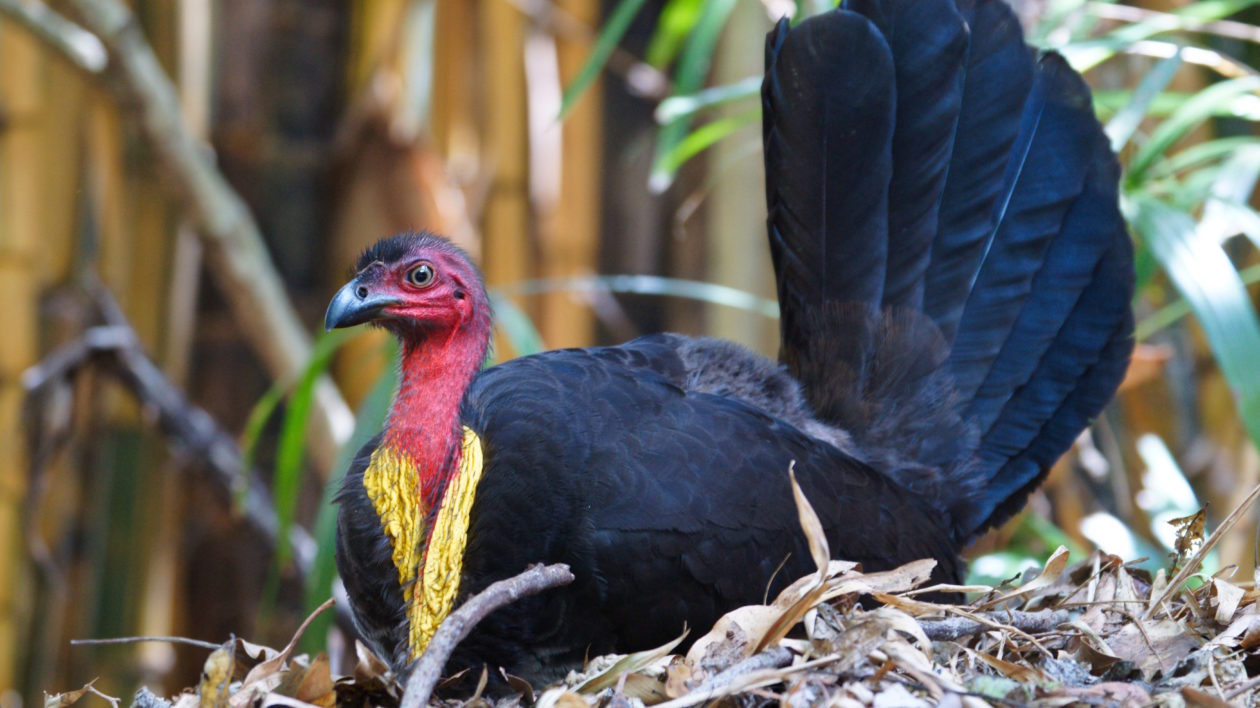
The Magnificent, Mound-building Megapodes
The magnificence of the megapodes lies in their weird nesting strategy. Most bird species build nests high in the trees, while a few other species lay their eggs on the ground. But only the megapodes bury their eggs inside massive piles of leaf litter and use the heat from the rotting vegetation to incubate their offspring.
It’s downright dinosaurian.
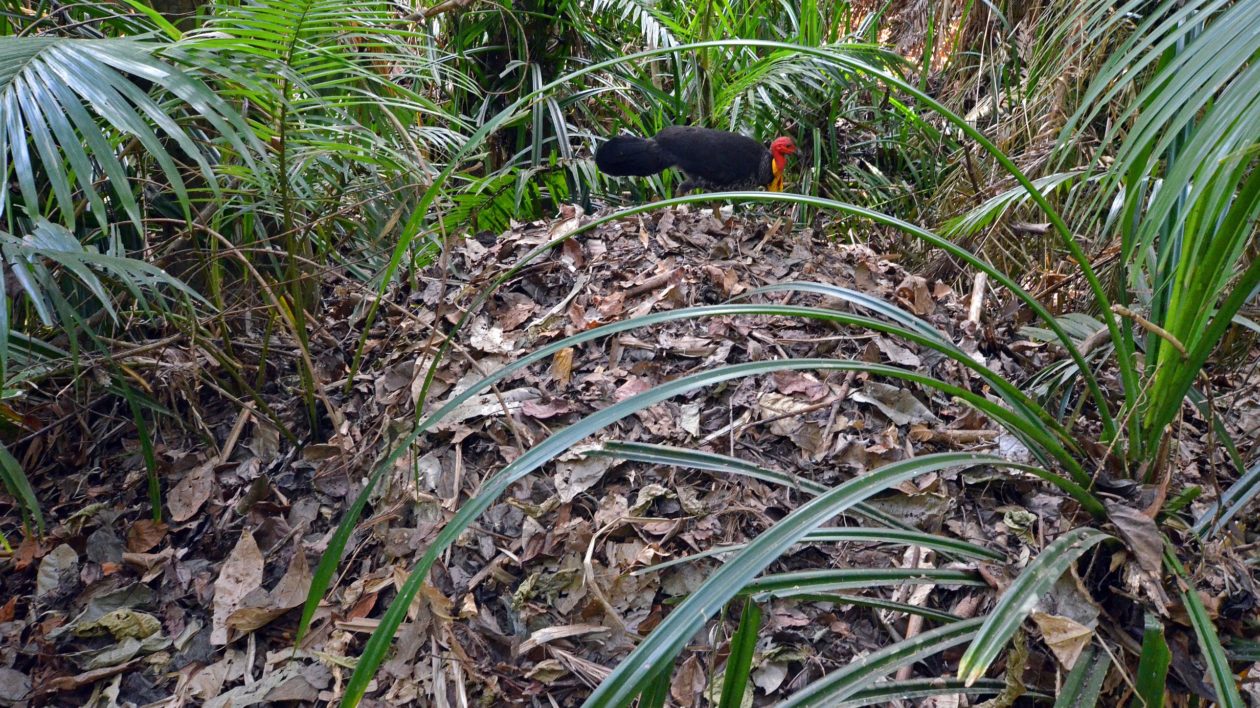
Male brushturkeys spend time scraping away at the forest floor with their massive feet, building up a pile of plant matter up to 4 meters high and 2 meters wide. After selecting her mate, the female brushturkey lays between 18 and 24 eggs in the mound, one egg every two or three days. Both parents then tend the nest, defending it from predators and adding or removing more nesting material as needed to keep the mound at a steady 33 to 35 degrees Celsius.
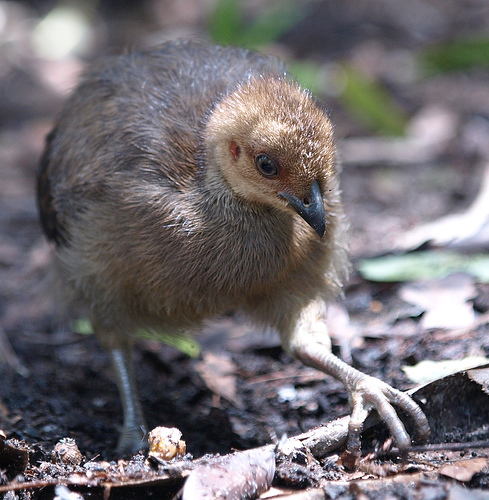
The exact temperature of the nest does influence the sex ratio of the brushturkey chicks, but not as dramatically as sea turtles, alligators, and other reptiles. Lower nest temperatures result in more male chicks, while higher nest temperatures result in more females; but in either extreme, the entire brood does not end up the same sex. Nest temperature also influences chick health: generally, the warmer the nest the heavier the chicks are upon hatching.
After seven weeks the young chicks hatch and slowly dig their way out of the pile. After that they’re on their own. Again like sea turtles and crocodilians, the adult brushturkeys offer no parental care.
When we returned later that afternoon, Boucher and I found dozens of brushturkeys milling around the parking lot like pigeons in a New York City park. Big, ugly, vaguely menacing pigeons.
By that point I’d warmed up to the Australian Brushturkey. I’d spent the day marveling at the birdlife of the lush Queensland rainforest — comical Green Catbirds, startling Eastern Whipbirds, and colorful Noisy Pittas.
But it was the primeval brushturkeys that fit the rainforest best.
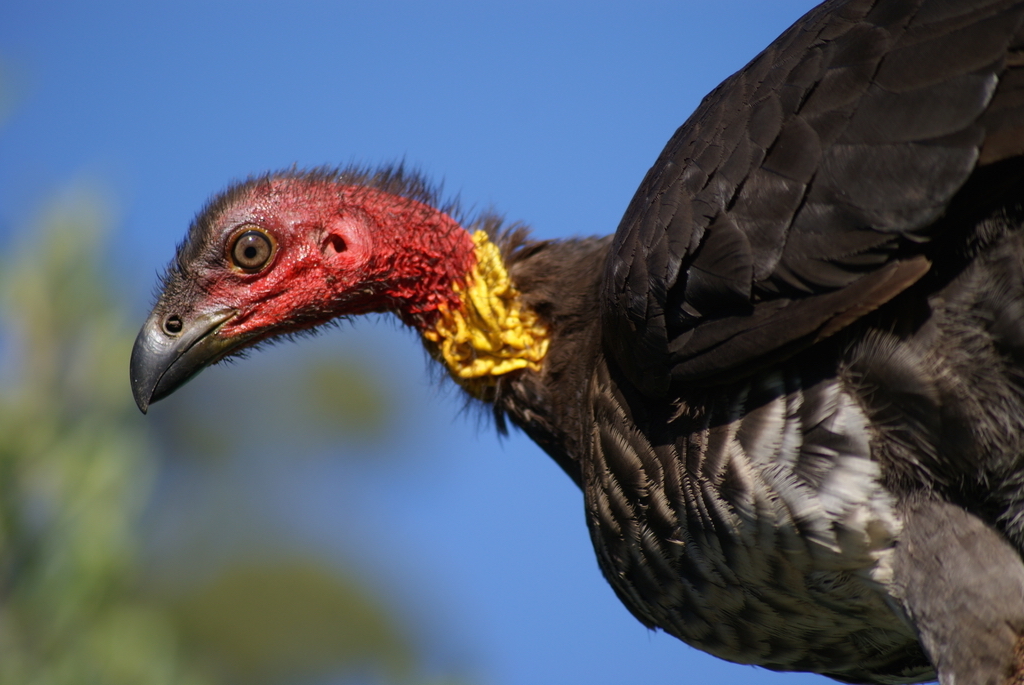



Thanks very much for the article. I’m also a huge Brush Turkey fan – although gardeners don’t like them much. There is more information about Brush Turkeys at https://www.turkeysanctuary.com including videos and recipes from first settler cookbooks (note: you’re not allowed to eat turkeys!!).
The article says that sex is partly determined by temperature. I don’t see how that is possible. Birds have chromosomal sex determination, ZW chromosomes, with the male being the homogametic sex (ZZ).